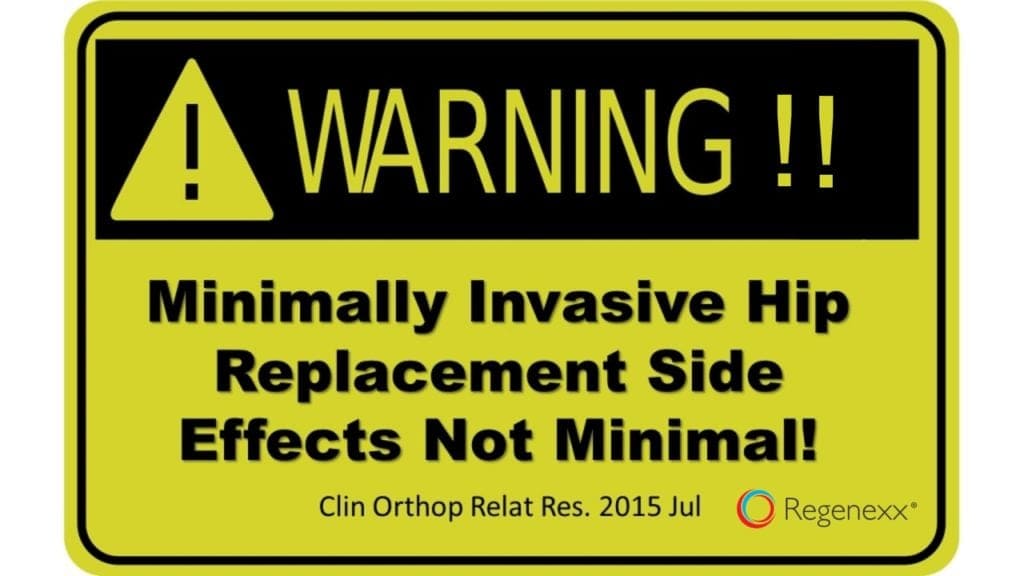Minimally Invasive Hip Replacement has Maximum Side Effects!
The concept of minimally invasive hip replacement for arthritis has been all the rage. I’ve talked to many patients who are naturally drawn to the concept that a smaller incision and smaller hip replacement devices are used. However, as I have blogged, like many things in life, the concept is really too good to be true. Now more research again confirms the serious minimally invasive hip replacement side effects.
Hip arthritis can be devastating, leading to pain and catching in the hip and groin. For reasons unknown, while knee arthritis can smolder for years, hip arthritis can come on quickly. In fact, I’ve seen hips literally go from mild to severe arthritis inside of a year! The most definitive option for moderate to severe hip arthritis has been hip replacement, but the surgery is very invasive. Hence, “minimally invasive” hip replacement has become more common. While more a marketing term than reality (minimally invasive in medicine generally refers to needle or catheter based procedures that don’t use surgery), the newer procedure involves smaller incisions and the placement of a different device. The big problem with the new smaller device is that it’s generally a “Metal on Metal” design, where both sides of the prosthesis are made of metal. These so called “MOM” hips have come under serious fire for shedding dangerous metal wear particles into the joint area and blood stream.
The new study was designed to look at what happened to blood levels of metal when MOM hips were being removed. This is largely because we know that MOM hips and other types of hip replacement devices raise these metal levels after they’re installed and the fact that many patients are now getting MOM hips removed due to toxic metal levels. The surgeons were both implanting new MOM hip devices and taking out existing prostheses. All patients who had their MOM hips removed saw lowering of their serum cobalt blood levels.What was very concerning is that for the patients with the highest metal levels in their blood, some still had elevated levels at 3 years after the offending device was removed!
The upshot? For patients who had high serum metal levels, removing the MOM hip generally helped their residual hip pain and brought these dangerous blood contaminants to heel. However, in a few patients, their levels stayed persistently high even after surgery. Conclusion? There’s nothing minimally invasive about these surgeries, they can mess patients up! More concerning is that we still see surgeons in our community installing these MOM hips and not discussing the risks with patients!

If you have questions or comments about this blog post, please email us at [email protected]
NOTE: This blog post provides general information to help the reader better understand regenerative medicine, musculoskeletal health, and related subjects. All content provided in this blog, website, or any linked materials, including text, graphics, images, patient profiles, outcomes, and information, are not intended and should not be considered or used as a substitute for medical advice, diagnosis, or treatment. Please always consult with a professional and certified healthcare provider to discuss if a treatment is right for you.
